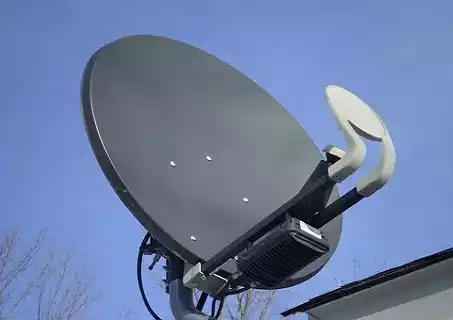BIS Publishes standards for Digital TV receivers with built in satellite tuners
New Delhi: The Bureau of Indian Standards-BIS has published three major Indian standards in the field of electronics. The first standard is the Indian Standard for digital TV receivers with built-in satellite tuners. The Bureau of Indian Standards, through its Technical Committee, has published the Indian Standard IS 18112:2022 specification for televisions with built-in satellite tuners. Televisions manufactured to this Indian standard would allow reception of free-to-air TV and radio channels by simply connecting a satellite dish to an LNB mounted at a convenient location on the roof/side wall of a building.
This would facilitate the transfer of knowledge about government initiatives, schemes, Doordarshan’s educational content and repository of Indian cultural programs to reach and benefit a broad section of the country’s population.
Currently, television (TV) viewers in the country need to purchase a set-top box to watch various paid and free channels. The viewer is required to use the set top box also for receiving free-to-air channels (uncoded) transmitted by Doordarshan. Now Doordarshan is in the process of phasing out its analogue broadcast. The free-to-air channels will continue to be broadcast via digital satellite transmission by Doordarshan.
To enable reception of these free-to-air channels without the use of a set-top box, television receivers with a built-in suitable satellite tuner are needed.
BIS Publishes standards for Digital TV USB Type C receptacles
The second standard is the Indian Standard for USB Type-C Sockets, Plugs and Cables. The Bureau of Indian Standards has published the Indian standard IS/IEC 62680-1-3:2022 USB Type-C® Cable and Connector Specifications. This Indian Standard is an adoption of the existing International Standard IEC 62680-1-3:2022.
This standard provides the requirements for USB Type-C port, plug and cables for use in various electronic devices such as mobile phones, laptops, notebooks, etc. This standard would provide common charging solutions for smartphones and other electronic devices sold in the country. This would facilitate a reduction in the number of chargers per consumer, as consumers would no longer need to purchase different chargers each time they purchase a new device. This would help achieve the Indian government’s mission to reduce e-waste and move towards sustainable development.
In the past, consumers had to keep different chargers for the different electronic devices they own, leading to additional expenses, increased e-waste and many inconveniences. Countries around the world are working to solve these problems.
The third standard is Indian standards for video surveillance systems. The Bureau of Indian Standards, through its Technical Committee on Alarms and Electronic Security Systems, has developed a series of Indian Standards (IS 16910) on video surveillance systems for use in security applications. The IS 16910 series of standards is an adoption of the international standard of the IEC 62676 series. The BIS Publishes standards for Digital TV provides a detailed overview of all aspects of a video surveillance system, such as requirements for its components such as camera equipment, interfaces, system requirements and tests to determine the image quality of camera equipment, and also specifies instructions for an efficient system installation.
With the ever-evolving technology in the security industry and the abundance of VSS to choose from, it has become cumbersome for the common man, be it installers/specifiers/users, to choose the right set of VSS that exactly matches his intended use. This series of standards would assist customers, installers and users in determining their requirements, determining the appropriate equipment required for their intended application, and also provide a means of objectively evaluating VSS performance. This will also help increase the security, robustness and cost-effectiveness of the tracking system.
Video Surveillance System (VSS) is an essential security component that is used almost everywhere to catch any unwanted activity. With the large number of video cameras offered for sale on the market and the seemingly endless variety of camera features and options available, efforts to obtain the right video surveillance system that produces images of suitable quality for the intended use have become confusing and technically demanding. . Owners and/or installers also lack a clear understanding of the purpose of each video surveillance system and the level of detail required to achieve that purpose.
Read Also | Free DD DTH Dish Set Top Boxes to be Distributed to People
- Tathastu Full Download on Tamilrockers and Telegram link
- Avatar Full Movie Leaked Tamilrockers Movies for HD download on filmy4wap, filmyzilla
- Mp4moviez link HD Hollywood Tamil Telugu Hindi Dubbed Movies Online Download
FROM THE WEB




